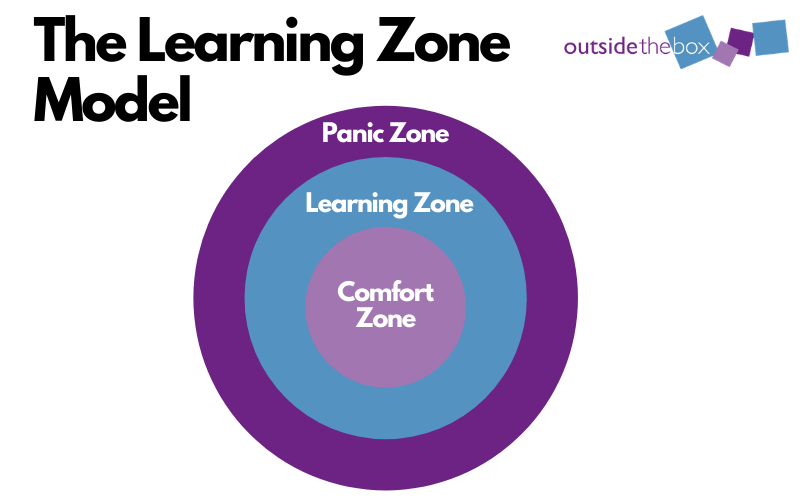Learning Zone Model
The ‘Learning Zone’ Model
The Learning Zone Model’ was developed by Tom Senninger, a German Educator and Adventurer, based on Lev Vygotsky Zone of Proximal Development. The model encourages us to see positive experiences as learning experiences and helps individuals to understand and expand their own boundaries and ‘comfort zones’.
We have used this model for planning and reviewing but it also describes the wider approach taken by the project. This model illustrates the links between the ‘safe space’, that formed during the pilot project, and the sharing of new experiences and explains how this supports the women to feel empowered to take balanced ‘risks’ enabling them to lead and direct the project.
Comfort Zone
In our comfort zones things are familiar to us, people, environment, activity etc. We are comfortable and we do not have to take risks. This is an important zone as it offers us space to reflect, to make sense of our experiences and crucially offers a feeling of safety. However, it does not offer us many opportunities to learn and develop. We need to move out of our ‘comfort zone’ to somewhere that feels safe enough.
Learning Zone
In this space we can take risks that are calculated and manageable but lead us to new discoveries, skills and knowledge.
Panic Zone
Learning in this zone becomes difficult as it is blocked by our sense of fear. Experiences that take us into our panic zone can trigger other painful, traumatic memories. Our priority here is to find protection and safety.
This approach to learning enables us to increase our comfort zone step by step. We feel that things are not as difficult, and that life slowly becomes easier as our familiarity grows. The women are supported by each other and by the project to move between comfort zone and learning zone and through constant ‘checking-in’ we are able to ensure that women never feel they have to go beyond their personal boundaries into panic zone.


